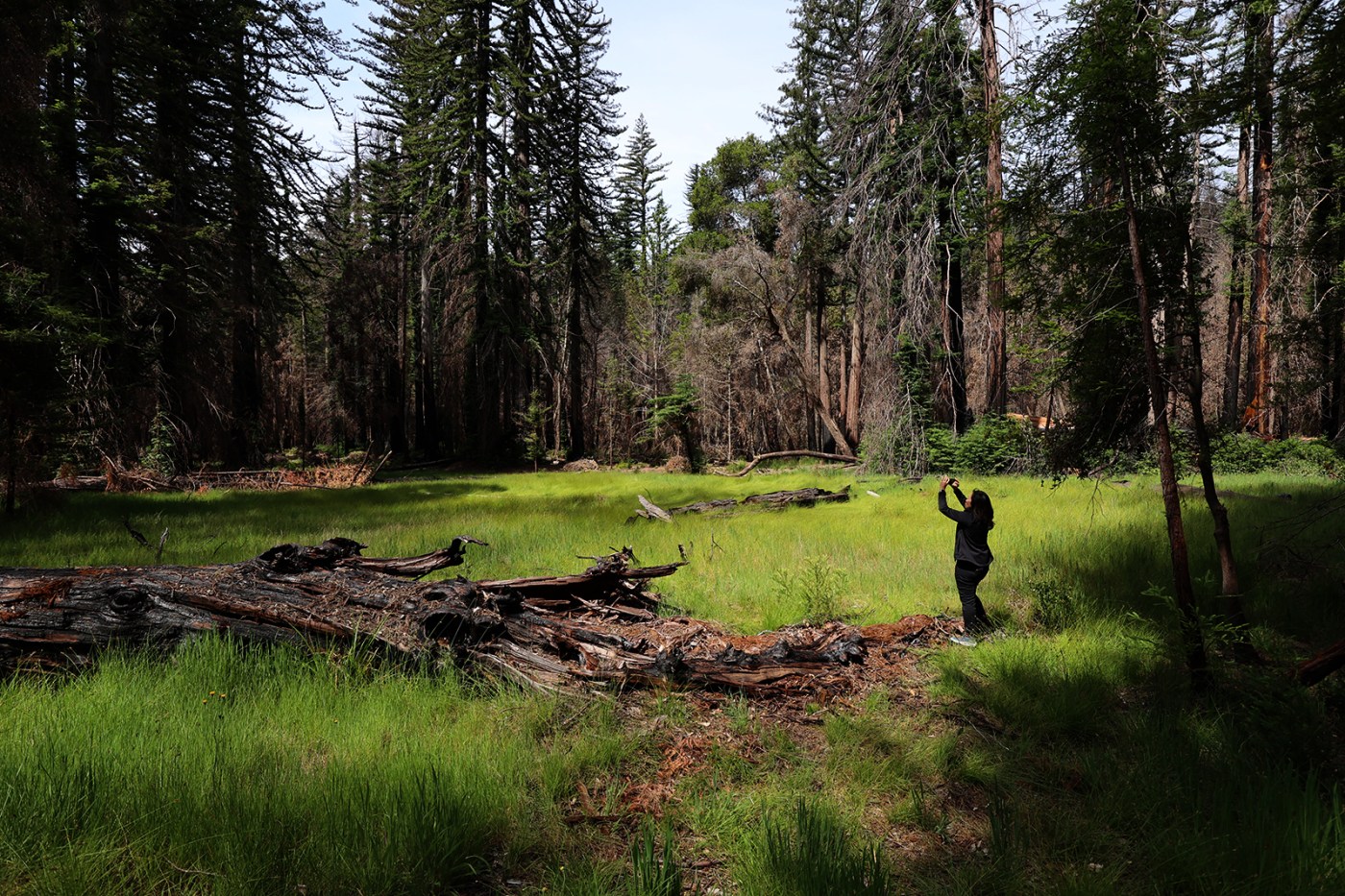
Nearly five years after a massive fire burned California’s oldest state park, Big Basin Redwoods, blackening groves of famous ancient redwoods and destroying all the campgrounds, the visitor center and other facilities, state parks officials have finalized a plan to rebuild.
The new plan for the beloved Santa Cruz Mountains destination, which opened in 1902 and received roughly 1 million visitors a year during its heyday before the fire, was released late Tuesday after more than a year of public meetings and studies.
The plan calls for shifting the visitors center, most campsites and much of the original parking out of the old growth forest core of the park. Those facilities had been nestled for nearly a century next to trees more than 250 feet tall and more than 1,500 years old. Instead they will be located in other areas of the park, and a shuttle bus will be operated on weekends from a new parking lot on the park’s eastern edge.
“This is a big deal,” said Chris Spohrer, superintendent of the Santa Cruz District of State Parks. “It’s the culmination of a lot of effort and studies and input from the public. I know five years is a long time. But it is a tremendous amount of work to rebuild a park of this complexity. We feel good about the direction we are heading in.”
The park was devastated by the CZU Lightning Complex Fire in August 2020. That blaze started with lightning strikes and burned 86,509 acres in rural Santa Cruz and San Mateo counties. Flames destroyed 1,490 structures, mostly homes around the town of Boulder Creek. One man was killed.
The fire burned 97% of Big Basin’s 18,000 acres. It wiped out campgrounds, the park store, the headquarters, ranger housing, bridges, the amphitheater and all the park’s utilities.
The good news, Spohrer said, is that the redwoods are continuing to recover remarkably. Fewer than 5% of the old-growth redwoods died, he said.
“There’s tremendous growth,” he said. “They have green needles and big green canopies. You can see scarred trunks when you start looking around, but it looks very different than right after the fire. It’s remarkable how resilient they are.”
The park reopened to visitors in 2022 after downed power lines, burned power poles, charred cars and dangerously leaning Douglas firs and other trees were removed. Since then more than 150,000 visitors have returned. Half-a-dozen walk-in campsites at Rancho del Oso, on the park’s ocean edge near Waddell Beach, are back. And crews have reopened 14 miles of trails and 25 miles of fire roads to hikers, bicyclists and horse riders.
Gov. Gavin Newsom visited the park after the fire, and included $186 million in the 2021 state budget to pay for repairs.
But some of the recovery has been slow going. PG&E is still rebuilding its electrical system, burying all the power lines. That work won’t be finished until next March, Spohrer said. The park’s water system and sewage system can’t be rebuilt until there is permanent electricity. And constructing the new facilities will happen after that, probably starting in 2027, he added.
The new plan will be the subject of a public webinar from 6 pm to 7:30 pm on July 10. For more information, go to reimaginingbigbasin.org.
A centerpiece of the new plan is to use a property called Saddle Mountain, along Highway 236, on the park’s eastern edge, as the new hub for visitors arriving at the park, with a new visitors center gift shop, parking lot and shuttle bus stop.
Near that is Little Basin, a 534-expanse which was a former campground used by tech pioneers Bill Hewlett and David Packard for company retreats. In 2007, Hewlett-Packard sold it to the Peninsula Open Space Trust, a Palo Alto environmental group, which transferred it to state parks.
The new plan calls for public campsites there and cabins, along with an area for tribal ceremonies and a tribal cultural center.
Although the amphitheater will be rebuilt in the original location, some campsites near the park’s old-growth center before the fire, such as Bloom’s Creek and Jay, will not be rebuilt and will be replaced as picnic areas.
New campsites will be built in other parts of the park about 1 mile north and east of the old growth core in areas known as Sky Meadow and Huckleberry.
Overall, there were 277 campsites before the fire. The new plan calls for 278.
One area cut significantly is parking. Before the fire there were 380 parking spaces around the former headquarters and along Highway 236 near the old-growth core of the park. Under the new plan there will be 225 spaces — 75 in the old-growth core of the park and 150 at the Saddle Mountain area — a 40% reduction.
Although some residents who live near the Saddle Mountain area have complained about facilities being moved there, longtime parks advocates say they are pleased.
“There’s a lot to like in this plan” said Sara Barth, executive director of the Sempervirens Fund, a nonprofit group in Los Altos whose members helped convince state lawmakers to save the park in 1902. “I think they have struck a really good balance.”
Propane tanks, wood shake roofs and other human additions made the fire burn hotter near the old headquarters area, said Paul Ringgold, chief program officer of Save the Redwoods League, an environmental group. Asphalt and buildings constructed back to the 1920s and 1930s compressed soil around redwood tree roots and changed water flow around the spectacular trees.
“The focus back then was getting as many people into these areas to increase the awareness of protecting the groves,” he said. “But with time we’ve grown to understand we can accomplish that without having to adversely impact the ecosystem.”